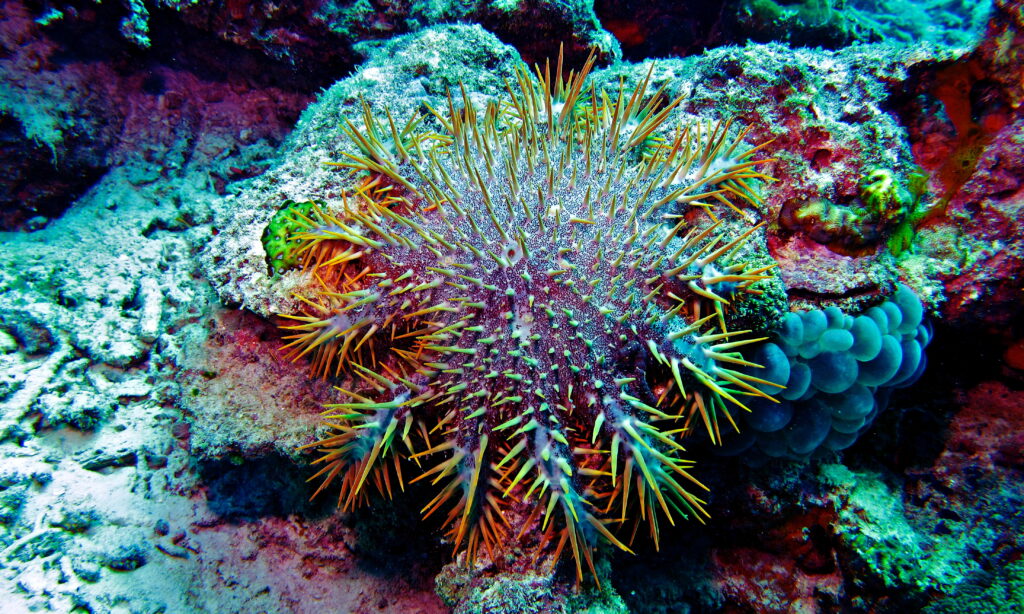
Excess phosphorus is fueling coral-chomping crown-of-thorns starfish in the South China Sea, a new JGR Oceans study finds. Credit: Wikimedia Commons/Bernard Dupont
AGU News
AGU launches ethical framework for climate intervention
With interest growing in geoengineering as a strategy for tackling global warming, AGU has launched an ethical framework as a guide to responsible decision-making and inclusive dialogue. The report was facilitated over the last two years by AGU and advised by a global panel of more than 40 experts. The report:
- says any research into large-scale interventions in Earth’s climate system must be grounded in sound ethical principles so society can make informed choices about whether to deploy them;
- warns that the unintended consequences of large-scale deployment are largely unknown; and
- proposes five key principles that new research, funding, and policy should consider.
Contact [email protected] for interview requests. [Ethical Framework report][press kit][read the full press release here]
AGU24 press registration
Press registration for AGU’s Annual Meeting is open! AGU24 will be held in Washington, D.C. from 9-13 December. Complimentary registration is available for journalists, journalism students, press officers, and institutional writers covering the meeting. Discounted housing is available through 11 November — be sure to book before the deadline! [register here][eligibility][AGU24 press center][hotel information]
Featured Research
South China Sea starfish takeovers linked to phosphorus surplus
Crown-of-thorns starfish periodically overwhelm and damage coral reefs in the South China Sea, with crowds reaching up to 1,000 starfish per hectare (2.5 acres). New research identifies the starfishes’ fuel: excess phosphorus, which the starfish get from eating corals and phytoplankton before releasing it back into the ocean. [JGR Oceans study]
Climatic origins of deadly 2023 northern India flooding
In July 2023, widespread, heavy rainfall produced floods in most of northern India, leading to hundreds of deaths and millions of dollars of damage. A new study uses climate modeling to untangle the causes behind the catastrophe, and highlights the need for improved soil and weather monitoring in hilly northern India. [Earth and Space Science study]
Marine heatwaves stifle phytoplankton blooms
Phytoplankton are important primary producers that underpin the oceanic food web. New research finds that marine heatwaves in the Mediterranean Sea reduce nutrient transport to the surface, tanking spring phytoplankton blooms by up to 70%, reducing zooplankton biomass by up to 50% and shifting the timings of both phytoplankton and zooplankton blooms. [Geophysical Research Letters study]
Low-latitude eruptions make bigger plumes
When volcanoes erupt explosively, they create plumes that typically fall into two categories: strong “umbrella cloud” plumes, and weak “spreading” plumes. New research finds that because of wind patterns, eruption plumes closer to the equator are usually weaker plumes, while those at higher latitudes are more often umbrella clouds. [Geophysical Research Letters study]
“Mega slumps” of thawing ground are destabilizing the Arctic
Landslide-like slumps of thawing ground damage infrastructure and degrade coastlines in the Arctic, emitting carbon as they form. A new study digs into why these slumps form and finds that seawater intrusion plays a key role. [Eos research spotlight] [JGR Earth Surface study]
###
Subscribe to TWFAGU and other AGU news